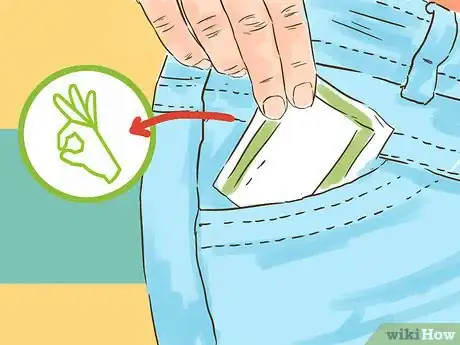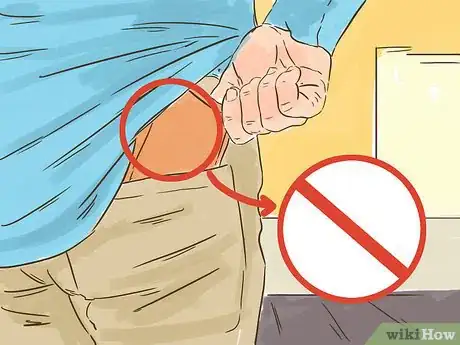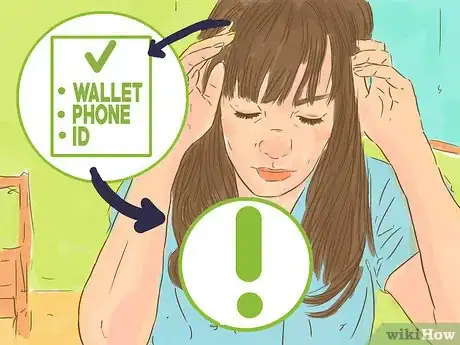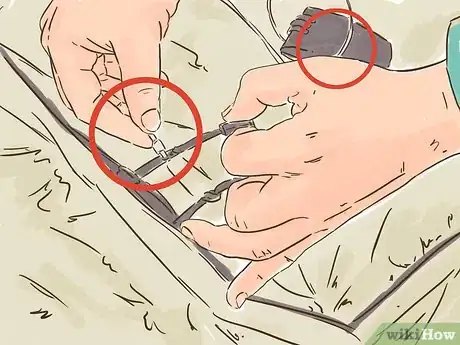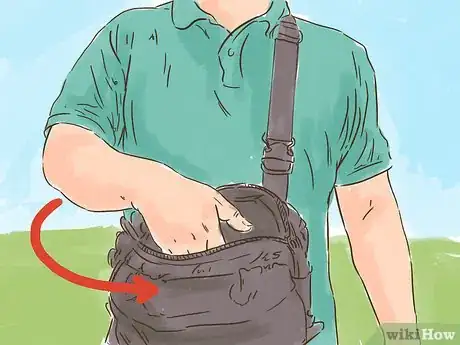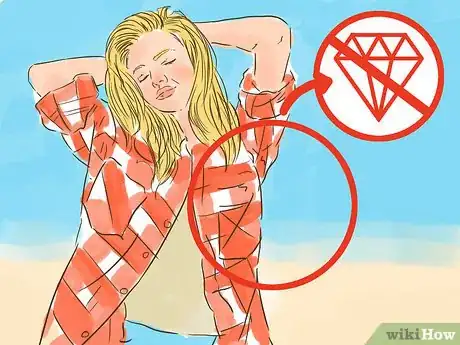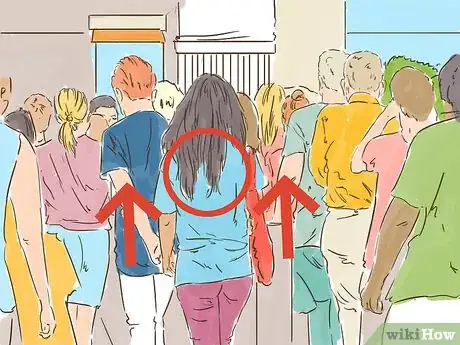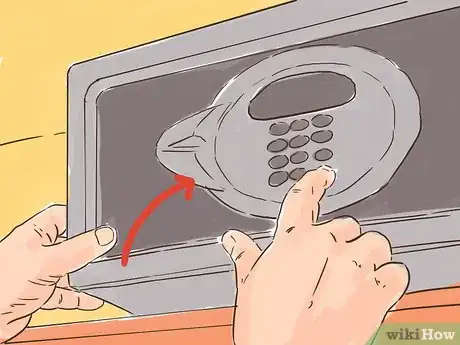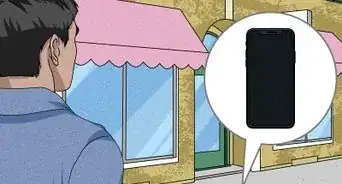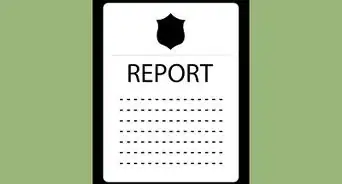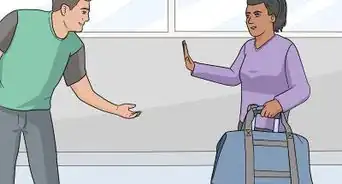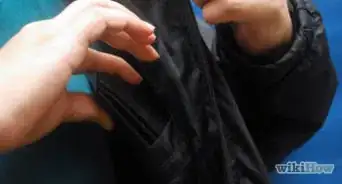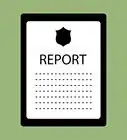This article was co-authored by wikiHow Staff. Our trained team of editors and researchers validate articles for accuracy and comprehensiveness. wikiHow's Content Management Team carefully monitors the work from our editorial staff to ensure that each article is backed by trusted research and meets our high quality standards.
There are 16 references cited in this article, which can be found at the bottom of the page.
This article has been viewed 15,819 times.
Learn more...
Pickpockets are a crafty bunch, with lots of tricks and gambits up their sleeves. The best way to prevent falling victim to them is to be just as crafty. Making careful choices about how much money you carry and where you carry it can help deter theft and, failing that, minimize your losses. The same goes for other valuables, like devices, jewelry, and bags. Finally, knowing when and where you are most vulnerable and remaining conscious of your environment will further help you protect yourself from being robbed.
Steps
Carrying Money Safely
-
1Store money in different places. Don’t put all your eggs in one basket. Divide your money and hide it in multiple places on your person. Ensure that you will still have cash on hand, even if you fall victim to pickpockets, by:
- Separating your smallest bills into the wallet that you will use most frequently, since this will be on display the most often.[1]
- Keeping larger bills in a more secure holder, like a money belt or a hidden pocket in your underwear or first layer of clothing.
- Hiding emergency funds in an unlikely container of little apparent value, like a mint tin or a box of feminine hygiene products.[2]
- Carrying a change purse for coins, to be kept in a separate pocket from your wallet.
-
2Only carry as much as you need. Plan your day before heading out. Decide how much cash you will need to cover that outing, with perhaps a little extra to cover unforeseen expenses. Whether you’re taking cash from a larger money roll that you keep with you, or withdrawing money from an ATM for each outing, don’t bring more than you expect to spend.[3]
- Use your plan for the day to decide how to divide and store your money on you, as well as which denominations to carry, if possible.
- For example, say you plan on traveling by both bus and taxi throughout the day, with a stop at a crowded market for shopping, and dinner at a fancy restaurant afterward. In that case, consider keeping coins for your bus fare in your change purse, small bills for taxi fare in your wallet, and large bills for shopping and dinner in your money belt.
Advertisement -
3Hold money where you can see it. Avoid using your back pockets.[4] Keep your wallet, change purse, and any other holders front and center, where you are more likely to spot thieving hands. If the only other option is the side pockets to your pants, use those. Otherwise, favor:[5]
- The inside pockets of your jacket or coat, preferably with your jacket/coat zipped or buttoned up for double protection.
- Pockets that can be closed with zippers, straps, buttons, ties, or, even better, a combination of them for extra security.
- “Smart” pockets sewn into the front of specially designed underwear, shirts, or other clothing worn close to the skin.[6]
- Wallet chains for any money holders that you keep in easily accessible pockets.
-
4Avoid drawing attention to your cash. Whenever possible, refrain from counting it where others can see. When you divide and hide your money before heading out, memorize how much you have where. Keep a mental tally from then to minimize the need to recount what you have left as you spend it. Additionally:[7]
- Fight the urge to touch your money holders in order to double-check that it’s still there. This may seem counter-intuitive, but continually touching your hidden wallet will show prying eyes exactly where to find it.
- Use private moments like bathroom breaks to get money ready for your next transaction. For instance, if you just had lunch before heading to a museum with an entrance fee, transfer money from your money belt to your wallet now so you don’t draw attention to your belt later.
- Check yourself out in the mirror before going out. Look for any obvious bumps through your clothing that might betray where your money is held. Do what you can to minimize or hide these, like using a thinner billfold or draping a scarf over your clothes to obscure it.[8]
-
5Take precautionary steps with plastic. Contact your bank and credit card companies before you go traveling. Inform them that you will be using your debit and/or credit cards in new location, just to make sure that your cards aren't denied when you use them yourself. Additionally:[9]
- Also ask them how to report a stolen or lost card from that location, since their contact information in one area may differ from another.
- Sign up for text and/or email alerts for your debit and credit cards. This way you’ll be notified about each purchase made with them, which is a good idea in case they're stolen without you realizing it.
-
6Keep loose cash, plastic, and contact info separate from each other. Remember: don't keep your all eggs in one basket. Hold your credit cards in a more secure holder (like your money belt or a separate wallet held close to you), rather than the wallet that you use the most often to handle small bills. Store your bank and credit card companies' contact information separately from the cards themselves. Ensure that you can report stolen cards as soon as possible.
- If you expect to use plastic frequently, consider using store-bought pre-paid debit cards instead of your personal accounts. Keep these in the wallet that will be on display the most often, and your personal cards in a more secure holder. This will help minimize your loss if your wallet is stolen.
- With personal cards, choose only one or two to bring with you. This will also reduce your losses in the event of theft. This could apply to each outing or even the whole trip itself.
Protecting Other Valuables
-
1Pack and wear bags smartly. If you’re carrying any sort of bag on your way out, pack your belongings in a way that will keep the most valuable items the least accessible to prying hands. Wear your bag in a secure fashion so that it is difficult (or, even better, impossible) for pickpockets to snag the whole thing and run off with it. For example:
- With purses and messenger-style bags, wear the strap around your neck, and hold the bag in front of you. Pack your most valuable items (like your wallet or phone) at the bottom, with lots of filler on top.[10]
- With backpacks and other large bags, keep valuables in the main chamber, toward the bottom. Only use side pockets for incidentals. If it has two straps, wear them both. If it has a stomach strap, wear that too.[11]
- Zip or fasten all pockets and chambers, even if they're empty. Use locks, safety pins, or other materials to create an extra barrier. Avoid coming across as an easy mark.[12]
-
2Keep valuables to a minimum. Adopt the same attitude toward tech, jewelry, and other expensive items as you would with cash. Only bring what you intend to use. Even then, ask yourself if you really need to use them. Reduce the risk of attracting unwanted attention and losing precious items by carrying as few valuables as possible.[13]
- Ideally, these should be few enough for you to keep an easy mental checklist. For example: wallet, money belt, phone, ID.
- For technology, consider investing in cheaper models devoted to travel. For instance, load your contacts into a prepaid cellphone instead of bringing your smartphone, or use a basic Chromebook instead of your brand-new MacBook.
-
3Maintain physical contact. Whenever you remove your bag or take out an expensive item, don’t let it go. Always keep some part of your body touching it directly so you can feel its presence and notice its absence immediately. For instance:
- Keep your hand on your phone even if you only set it down momentarily on a table or other surface.[14]
- Keep the strap of your bag looped around your leg or arm when you take it off.[15]
- Wear your backpack backwards when taking a nap on a train, bus, or other form of transportation.[16]
- Use cable locks to secure your belongings if you have to leave them alone for a short while.[17]
Minding Your Surroundings
-
1Be on alert in crowds. The difference between a mugger and a pickpocket is that a mugger threatens the use of force to get what they want, thus making themselves known, while a pickpocket aims to pluck what they want without you ever knowing. Since this is much harder to do on an otherwise empty street, expect pickpockets to work in areas with lots of foot-traffic, where you are more likely to be bumped into without thinking much of it. This could include:[18]
- Crowded tourist sites and public events, like urban squares, open markets, and parades.
- ATMs, especially those that are poorly lit and/or directly on the street.[19]
- Transportation hubs, like train and bus stations.
- On board mass transit systems, like buses and subways.
-
2Expect decoys. Some pickpockets may work individually, but many work in pairs or groups. Be on guard whenever you are approached by strangers. They may be perfectly innocent, but play it safe and assume they are trying to distract you. Pay attention to what’s going on around you, and especially behind you.[20]
- If you haven’t already, bring any purses or bags that you’re carrying in front of you immediately.
- Alter your position. Don’t stand in one place. Keep changing which way you face so your back isn’t facing any one direction for too long.
- Use any reflective surfaces like mirrors or windows to keep tabs on who’s coming up behind you.
-
3Dress simply. Model yourself after the plainest folks you see on the street. Pickpockets target people who look like they have stuff worth stealing, so leave your designer clothes, logo-heavy articles, and jewelry at home. Dress simply and blend in with the common citizen.[21]
- When shopping, avoid using branded bags provided by stores, which will announce to the world where you can afford to shop.[22]
- Instead, carry your items out in your backpack or messenger bag, or bring a plain tote bag that could just as easily be carrying groceries.
-
4Act like you know where you’re going. Pickpockets, especially those working in teams, rely on disorienting their victims with distractions so they won’t notice their pockets being picked. Because of this, they love to prey on people who appear lost since they’re already disoriented, so act like you know exactly where you are, even if it’s a bluff. If you become lost:[23]
- Casually note a landmark or cross-street to get your bearings. Then keep walking until you find a less crowded place where you can sit down, like a cafe or a park bench.
- Stroll on in as if this is exactly where you were headed in the first place. Order a coffee, take a seat, and wait a few minutes before checking your map, as if you’re just relaxing.
- If you have a smartphone, use that to find a map, since you could be looking up anything. Otherwise, take your physical map out and study it casually, as if looking up something for later.
- Once you know where you’re going, wait a little bit before heading on. Cement the idea that you were just double-checking something, not trying to figure out where you are.
-
5Err on the side of caution with your hotel or hostel. Leave your extra money, plastic, important paperwork, and any valuables you don’t need behind in your room before going out. At the same time, protect them against theft while you’re gone. Research customer reviews, police blotters, and other online news sources about your hotel and any crime they may have experienced. Depending on what you find, consider the following safety measures:[24]
- Locking important paperwork, extra money and plastic, and other valuables in a hotel safe.
- Repacking all your belongings, locking all compartments and pockets of your luggage, and then securing them with cable cords to fixed objects in the room.
- Bringing your own lock for storage lockers rather than trusting those provided by the establishment.
Community Q&A
-
QuestionWhat kind of methods/distractions do pickpockets usually use?
 Ariana EfronCommunity AnswerThere are many methods that can be used to distract someone; however, some common ways are asking for directions or purposefully bumping into you and making it seem like an accident.
Ariana EfronCommunity AnswerThere are many methods that can be used to distract someone; however, some common ways are asking for directions or purposefully bumping into you and making it seem like an accident.
References
- ↑ http://www.forbes.com/sites/marcwebertobias/2013/08/28/how-to-protect-yourself-from-pickpockets-and-thieves-when-you-travel/3/#34e9eec2581b
- ↑ http://grrrltraveler.com/trip-planning/ways-to-outsmart-pickpockets-and-thieves/
- ↑ http://www.forbes.com/sites/marcwebertobias/2013/08/28/how-to-protect-yourself-from-pickpockets-and-thieves-when-you-travel/5/#3202d7d72dfd
- ↑ http://www.forbes.com/sites/marcwebertobias/2013/08/28/how-to-protect-yourself-from-pickpockets-and-thieves-when-you-travel/3/#3c29b454581b
- ↑ http://www.forbes.com/sites/marcwebertobias/2013/08/28/how-to-protect-yourself-from-pickpockets-and-thieves-when-you-travel/3/#3c29b454581b
- ↑ http://grrrltraveler.com/trip-planning/ways-to-outsmart-pickpockets-and-thieves/
- ↑ http://www.forbes.com/sites/marcwebertobias/2013/08/28/how-to-protect-yourself-from-pickpockets-and-thieves-when-you-travel/4/#30bc1c7b430c
- ↑ http://www.forbes.com/sites/marcwebertobias/2013/08/28/how-to-protect-yourself-from-pickpockets-and-thieves-when-you-travel/4/#5b780e23430c
- ↑ http://www.forbes.com/sites/marcwebertobias/2013/08/28/how-to-protect-yourself-from-pickpockets-and-thieves-when-you-travel/5/#3b4fecdb2dfd
- ↑ http://www.forbes.com/sites/marcwebertobias/2013/08/28/how-to-protect-yourself-from-pickpockets-and-thieves-when-you-travel/4/#2de98663430c
- ↑ http://www.forbes.com/sites/marcwebertobias/2013/08/28/how-to-protect-yourself-from-pickpockets-and-thieves-when-you-travel/3/#dcbdb09581b1
- ↑ https://www.ricksteves.com/travel-tips/theft-scams/outsmarting-pickpockets
- ↑ http://solotravelerblog.com/keep-your-cash-10-ways-to-protect-yourself-from-pickpockets/
- ↑ http://www.forbes.com/sites/marcwebertobias/2013/08/28/how-to-protect-yourself-from-pickpockets-and-thieves-when-you-travel/4/#315f1dae430c
- ↑ http://solotravelerblog.com/keep-your-cash-10-ways-to-protect-yourself-from-pickpockets/
- ↑ https://www.ricksteves.com/travel-tips/theft-scams/outsmarting-pickpockets
- ↑ http://www.forbes.com/sites/marcwebertobias/2013/08/28/how-to-protect-yourself-from-pickpockets-and-thieves-when-you-travel/3/#528454a2581b
- ↑ https://www.ricksteves.com/travel-tips/theft-scams/outsmarting-pickpockets
- ↑ http://www.forbes.com/sites/marcwebertobias/2013/08/28/how-to-protect-yourself-from-pickpockets-and-thieves-when-you-travel/3/#5b195546581b
- ↑ http://www.forbes.com/sites/marcwebertobias/2013/08/28/how-to-protect-yourself-from-pickpockets-and-thieves-when-you-travel/#107deb806c02
- ↑ http://grrrltraveler.com/trip-planning/ways-to-outsmart-pickpockets-and-thieves/
- ↑ http://www.forbes.com/sites/marcwebertobias/2013/08/28/how-to-protect-yourself-from-pickpockets-and-thieves-when-you-travel/#107deb806c02
- ↑ http://www.forbes.com/sites/marcwebertobias/2013/08/28/how-to-protect-yourself-from-pickpockets-and-thieves-when-you-travel/2/#1dfa14b56d29
- ↑ http://grrrltraveler.com/trip-planning/ways-to-outsmart-pickpockets-and-thieves/

